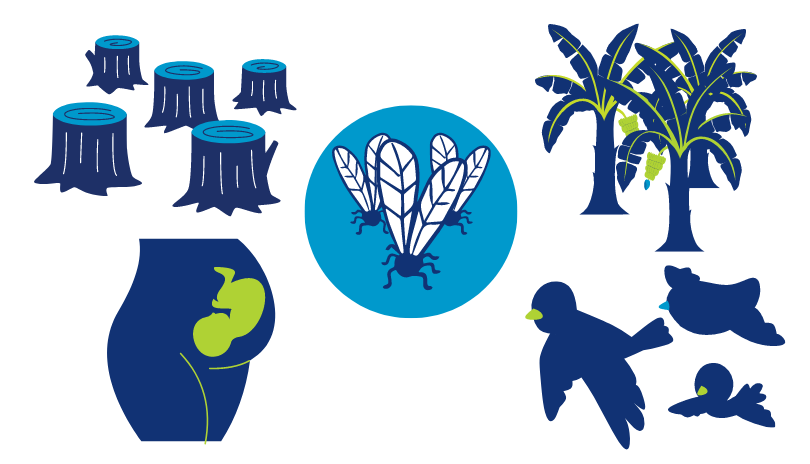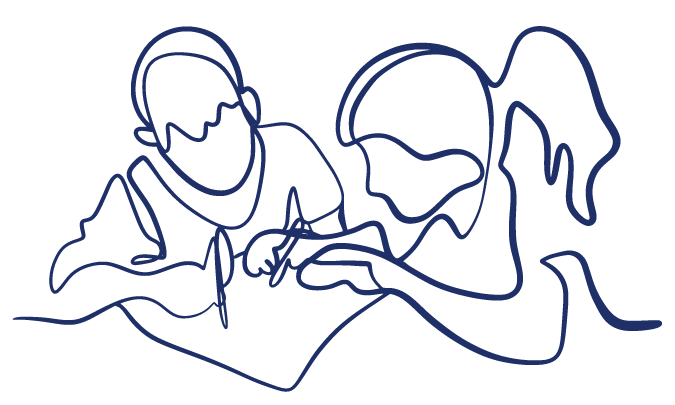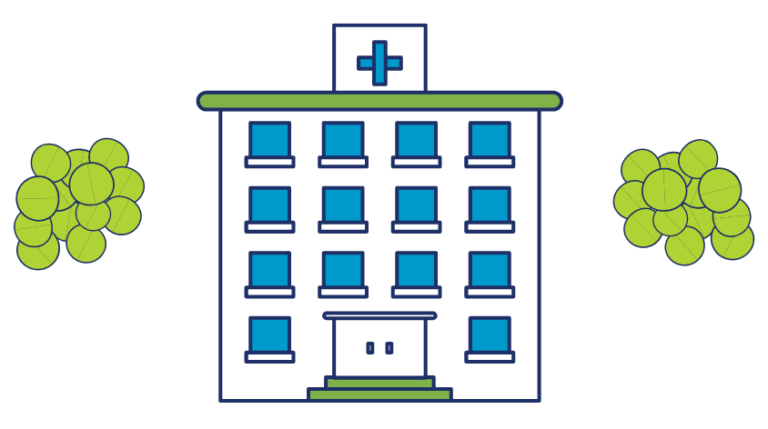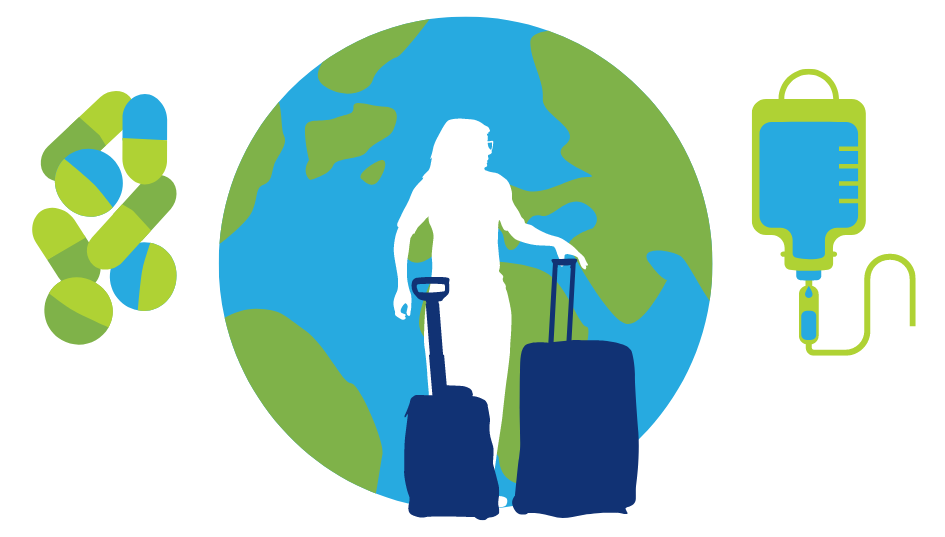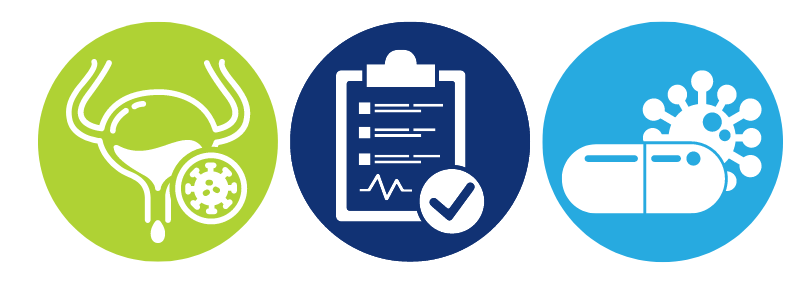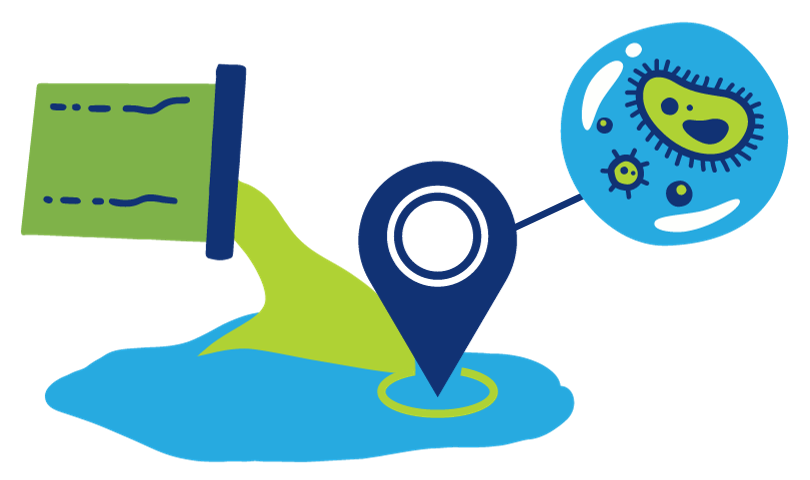
Drug-defying superbugs can be found in manure, soil, the ocean, and especially in sewers.
These places are sources of infection, but they also provide a way to keep an eye on which drug-resistant germs are where – and how much they are changing. The World Health Organization encourages mapping all of the places drug-resistant organisms are popping up, and what kind of organisms there are. “If no action is taken, AMR (antimicrobial resistance) could cost the world’s economy US$ 100 trillion by 2050,” WHO says.
Windi Muziasari, PhD, became passionate about tracking these deadly germs while doing postdoctoral research at the University of Helsinki in Finland. The Indonesian-born scientist founded her own company to do this mapping for governments, communities, and companies.
As Founder and CEO of ResistoMap, Muziasari has looked for drug-resistant microbes in agricultural runoff, in hospitals, under city streets, among wildlife, and elsewhere in dozens of countries. The hope is to act as an early warning system so that companies, governments, and others can do something about the problem.
“Almost everywhere is polluted,” she tells us on the One World, One Health podcast. Listen as Windi Muziasari tells host Maggie Fox about how and why she got started and what she’s learned since launching ResistoMap.
Maggie Fox 00:00
Hello and welcome to One World, One Health where we take a look at some of the biggest problems facing our world. I’m Maggie Fox. This podcast is brought to you by the One Health Trust with bite-sized insights into ways to help address challenges, such as infectious diseases, climate change, and pollution. We take a One Health approach that recognizes that everything on this planet — the animals, plants and people, and the climate and environment — are all linked.
We’ve talked a lot on this podcast about antimicrobial resistance, drug defying superbugs, and how to fight them. But you can’t fight what you don’t know about. And world health authorities are all urging better surveillance for these infections. Dr. Windi Muziasari has taken the lead on doing just that. She’s the founder and CEO of ResistoMap — a company that works with hospitals, agriculture, other industry, and governments to look for antimicrobial resistant germs in the environment. She’s joining One World, One Health to talk about why she founded this company, and how it’s helping. Windi, thanks so much for joining us.
Windi Muziasari 01:07
Thank you. Thank you for inviting me too.
Maggie Fox 01:10
Tell me, how do you monitor the environment for antibiotic resistance? How is that different from just looking for people who are infected with resistant germs?
Windi Muziasari 01:21
When you go to a hospital, right, and you know that you’re infected with this bacteria, usually (the) doctor will get the blood samples and then stool or urine from your body. But when we talk about (the) environment, so, we, usually, look for the source of this antibiotic resistance as pollution. And then also we want to see the impact of the spread of this bacteria spread in the impacted environment. We collect sample from wastewater — the wastewater from hospital, wastewater from the slaughterhouse, wastewater from (especially) antibiotic manufacturers, and wastewater from the treated wastewater treatment plant.
When we talk about the spread of this resistant bacteria in the environment, we need to collect from the impacted environment, such as in the river, in the drinking water, in the coastal area where you swim and (go) fishing. And then, of course, in the soil, agricultural soil where there’s a manure impact. So, it’s very important to understand what do you want to see first, whether (it) is the sources or the impacted environment.
Maggie Fox 02:23
So, you mentioned wastewater. How do you find these super bug germs in wastewater?
Windi Muziasari 02:28
When you eat, right, you consume antibiotics, and when we consume (antibiotics), antibiotic-resistant bacteria will develop in your gut system because, of course, bacteria need to live. So, they need to be resistant when the antibiotics are presented and this bacteria are released through your waste into the sewage system. And then, of course, they will be in the wastewater. The same in the animals–antibiotics not only used in humans but also in animals. So, when animals consume antibiotics for treatment, or any consumption, resistant bacteria will develop in their gut, and they release through their waste also.
Maggie Fox 03:04
So, what goes in, comes out?
Windi Muziasari 03:07
Yeah. And I would love people to be aware of this issue. So, don’t think that when you go to (the) toilet to flush, it means that they’re gone. No, they’re not, unfortunately. They’re released into the environment. And if you don’t stop this, if you don’t mitigate the spread of this resistant bacteria, they spread in our surrounding environment, and they will end up through our system back again, either when you’re swimming or when you interact directly with the environment, or through the food chain system. So, it’s very important that we need to mitigate spread of resistant bacteria in the environment.
Maggie Fox 03:44
What kind of organisms do you look for?
Windi Muziasari 03:46
So, it’s different when we’re talking about the environment. In environment, we don’t necessarily look (for) the bacteria itself, like the name of bacteria, like when you go to doctor you need to know, right. What is the pathogen, what is the bad bacteria that cause you infection in your body, but when we’re talking in the environment, there are many bacteria there. So, the problem that the genes that make bacteria resistant can be transferred between bacteria. So, this is the problem. So, that’s why we cannot just study one organism or two certain organism(s), but we need to study whole bacteria from the environment.
Maggie Fox 04:23
So often, you’re not looking for one specific bacteria, you’re looking for the genes that give them antimicrobial resistance in the first place.
Windi Muziasari 04:32
Yes, that’s true. But, of course, we also monitor the pathogens itself because it’s very important. So, we monitor the genes that are resistant to bacteria, the genes that make the resistant bacteria spread or mobile transfer between bacteria. We call this mobile elements, and also the genes that cause infections like this Klebsiella or any other pathogens, but the main idea here that we are using environmental DNA method where we collect the DNA and we just test the genes from these DNA samples.
Maggie Fox 05:05
People may have heard of this because there was some wastewater surveillance for COVID. But COVID is a virus and it’s got to be different methodology.
Windi Muziasari 05:13
The problem to treat virus and bacterial DNA, or this environmental DNA indeed is different. We need to monitor many genes that are associated with antibiotic resistance. This is the difference with COVID because there are only maybe a few genes as a marker in COVID-19, maybe like four markers to know there is COVID-19.
But for antibiotic resistance, there are hundreds of 1000s of known (genes) that are resistant, because there are many types of antibiotics, right. At least, there are 10 major antibiotics. So, it means there are a lot of types of resistance to these 10 group of major antibiotics. And that’s why we need to study (kind of) all these genes comprehensively and using this environmental DNA.
Maggie Fox 05:54
What are some of the things you found?
Windi Muziasari 05:56
Unfortunately, only bad news is that pollution is everywhere, and it’s really, really high. You can see that the level of resistance in some rivers that’s supposed to be clean, but then the level of resistance as polluted as waste from these swine farms. So, that is horrible, and it’s globally. So, it doesn’t matter which country, which region, even in high-income countries, the pollution is really high. It’s because many of the wastewater treatment are not really optimized to remove these microbial pollutants. So, they are already spread everywhere.
And you may know when your antibiotic use in agriculture are really high, and they from this manure application to the soil and without treatment. So then, they are just spread everywhere. And especially in the regions where the sanitation are not good, then there are pollution everywhere.
Maggie Fox 06:46
So, what you’re saying is a lot of this is from pollution. It’s runoff from farms, and you mentioned swine, so pig farming. What’s going on–people (and) farmers are feeding these antibiotics to their livestock and then these livestock are shedding the antibiotic resistant bacteria into the wastewater through their manure?
Windi Muziasari 07:05
Yes, of course, because, like for example, usually, intensive farming, they use antibiotics a lot. So, they use antibiotics as you mentioned not only for treatment, but usually just to let them grow. I’m happy that I learned there are more country prohibit now (the use of) these antibiotics to grow, as a growth promoter. But still, if you have many animals, you will use a lot of antibiotics. And as I mentioned, if you consume antibiotics, even in the animals, resistant bacteria will develop and they’re released through their waste through their stool or like manure.
And then if it’s applied in the agriculture, and there’s the runoff from the farms, both from the agriculture area, released to the water environment, and they will spread also. Not to mention, if we use them as (the) food, if there is not good sanitation, this bacteria could spread or contaminate our food. And this food contamination, if you’re unlucky, you will be infected with resistant bacteria. It happened to my friend.
He was traveling (holiday), you know, getting street food. He travels to this country every year (and) so, he would never expect that to happen to him. And he got the street food. And he was infected with shigella that are already resistant to all antibiotics. So, he (was) hospitalized for two weeks. And the doctor said to him, “you need to say goodbye to (your) family, because no antibiotics work in that hospital.” It was just street food contamination, you know, you get diarrhoea and you’re in the hospital for two weeks. They, the doctors, tell you that no medicine work. I was so scared about this. And I’m happy that actually because he has like good life (health) insurance that he could access the very expensive antibiotics that costs $200 per shot. And he needed to get it twice a day for seven days; that he could cure from this shigella infection.
But can you imagine if like ordinary people you know, who doesn’t have the insurance, who does not have access to high-tech health care system, they will die simply just (because of) the food contamination. And this will happen unfortunately, more often, if we don’t stop the pollution in the environment (and) also in our food system.
Maggie Fox 09:09
Windi, do you have personal reasons for doing this in the first place?
Windi Muziasari 09:13
Yeah, I think in the first place I think it’s because I’m Indonesian. So, when I brought this research after my PhD in Finland, in Finland because everything is clean and nice, is not so big issue. But, at least, I learned the technology and I want to bring this technology to my home country in Indonesia as a postdoc. So, before I built the company, I did my postdoc using this technology in my home country.
And this is, I started to like, “oh my god, you know the world is in a bad situation.” But then, I learned people don’t know about this problem because they don’t monitor and I asked why people don’t monitor, (it’s because) they don’t have the technology because this environmental DNA method or this high throughput PCR or this metagenomics are really advanced, right.
So not every country has the privilege to do this job. And I started (thinking), “ah, this is one of the reasons that I build the company to let people have the access to monitor.” And then the more I let people get the access means I monitor more samples, right. So, we’ve been monitoring over 10,000 environmental samples across 45 countries in our database, and now it will be 50 countries. The results, all of them are horrible, like every, almost every environment are polluted. Of course, there are some regions that are really still good. So, this is one of the reasons why I started to feel more passionate about this, because I see the data, you know, like if I open this database to let people see the real situation.
And that’s why, now our passion now is to bring this global map in the UN level, so that globally, every country should see the problem in their own country, and understanding what is the problem in their country, because every country has a different problem, different type of resistance, different kind of disease. Well, you know, tropical country, for example, and when you are from the four seasons (kind of) country, will be different. Antibiotic use will be different. So, that’s why I want to give the access to everyone to monitor this to understand that the problem is really, really bad. And people didn’t realize it, because people just focus on, when they talk about antibiotic resistance, the doctors. It is true.
Doctors and veterinarians are really in the bad situation because they need to cure (the) patient, right? They need to make the animal healthy again, but they don’t. So, they don’t have the energy to see how (it) is the waste outside of them. So, this is why we need more effort from other sectors, like as a One Health approach, we need like work together so that we can help doctors (and) veterinarians to do their job. That means treating people and animals to get healthy again.
But then, us as the environment here to work together to mitigate spread of this resistant bacteria from the hospital, from the … animal farm not spreading to the surrounding, and especially in a cross contaminated, cross pollution between the hospital to animal, animal to the hospital, making sure that just stop there. And so, the antibiotics still work. So, I think this is more why my passion being a bit more compared to others because I see the data (on a) daily basis, and it’s getting worse and worse, unfortunately.
Maggie Fox 09:19
Windi, so how do low- and middle-income countries afford this kind of testing? It sounds like it’s expensive.
Windi Muziasari 10:57
Well, it’s because they don’t need to invest in their own lab. They don’t need to invest buying this very expensive machine, they need to invest even the data structure, you know, to safe storage (safely store), the data. So, what they need to do is just collect the sample, and they pay the money, enough money for their sample. So, it’s not big, of course, still expensive compared to the standard monitoring. But still with the amount of that money, they can get very comprehensive information because usually, if you, like in a high-income country, because you have your lab you can afford, right, buying this console mobile, buying the machine, and running on your own.
But in (a) developing country, the budget is usually very limited. But then this limited budget is enough usually to just monitor their sample. So, this is our system. We have a very flexible technology–it is called smart chip PCR system. So, we can study 384 genes at once. And then or we can, let’s say flexible changes to only targeting maybe 20 genes, but we can analyze 100 samples. So, it’s very flexible. And that’s why it’s very good for the developing country because they said, “oh, I have, Windi, I have only, let’s say $10,000 budget, what are we going to do with this?”
And then I can play around, what is this, how many samples you have, and then we know that you can target maybe only this amount of genes, and that’s why they can access it. And I think one another thing is not only just the technology, but it’s the interpretation of the data. Many of them wouldn’t understand so what is this gene meaning, what (does it) mean, right. So, we are developing a platform, an intelligent platform that can help this, the non-expert, by seeing the result, the laboratory result.
They will understand that your situation is like let’s say red color. To me, that is bad. And then blue color means that they (resistance) are there, but it’s still in the low abundance. So, this kind of thing, I hope, that by making them easy understanding, you know, not only easy access technology, but also understanding the result can have better action for them, more time for them to do action because that’s what we need now. Right? More action is needed and policymakers need to make regulation in place that just (for example), you know, wastewater treatment and this should limit the spread of this pollution, especially from antibiotic manufacturers, hospitals, slaughterhouse, and animal farms like the big sources of the stress system releasing to the environment.
Maggie Fox 14:43
And have they been able to make changes in some of the places you’ve worked based on your findings?
Windi Muziasari 14:49
Yes. There are many countries now, for example, (that) started having implementation of national action plan where they conduct monitoring in the environment like the spread of this antibiotic resistance in environment included in their action plan. So, I hope that of course, the more we are aware of this pollution, I hope there will be more action not just like, oh, there’s a problem. We know already the problem, but (with) better monitoring, we will know better, (such as) what is the main source that we can put the better resource to mitigate the spread of the resistant bacteria in the point sources.
Maggie Fox 15:24
Windi, what a pleasure it’s been speaking with you. Thank you for joining us.
Windi Muziasari 15:28
No, thank you so much. It’s my pleasure.
Maggie Fox 15:32
Listeners, thank you for joining us too. If you enjoyed this podcast, please share it. You can learn more about this podcast and other important topics at onehealthtrust.org. And let us know what else you’d like to hear about at [email protected]. Until next time.
Ramanan Laxminarayan 15:53
Thank you for listening to One World, One Health, brought to you by the One Health Trust. I’m Ramanan Laxminarayan, founder and president of the One Health Trust. You can subscribe to One World, One Health on Spotify, Apple podcast, or wherever you listen to podcasts. Follow us on social media at One Health Trust (one word) for updates on One World, One Health and the latest in research on One Health issues like drug resistance, disease spillovers, and the social determinants of health. Finally, please do consider donating to the One Health Trust to support this podcast and other initiatives and research that help us promote health and well-being worldwide. Until next time.
Guest
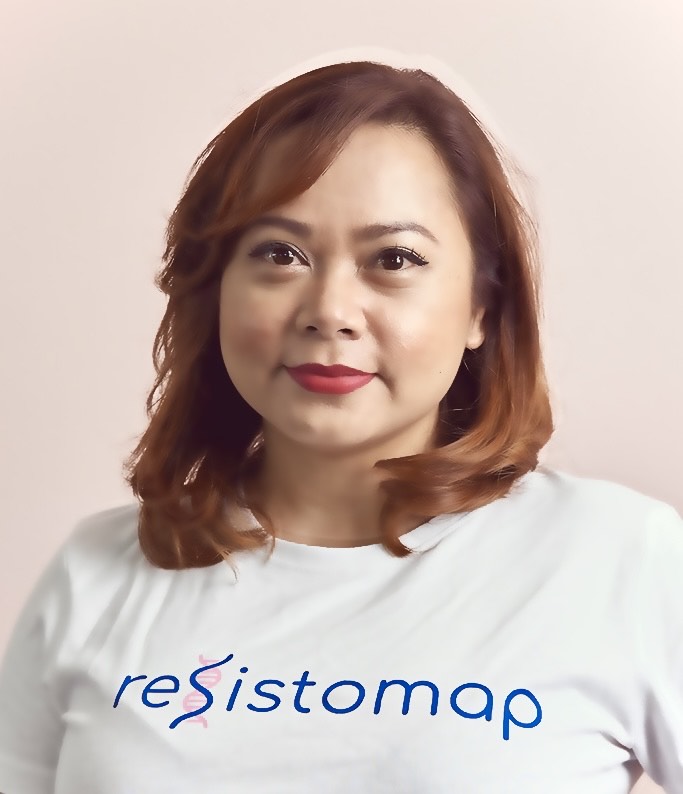
Credits
Hosted and written by Maggie Fox
Special guest: Windi Muziasari
Produced and edited by Samantha Serrano
Music composed and sound edited by Raquel Krügel
Transcript edited by Dipyaman Sengupta

